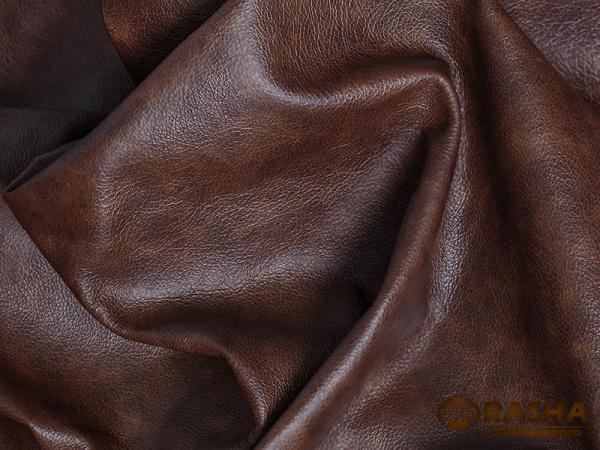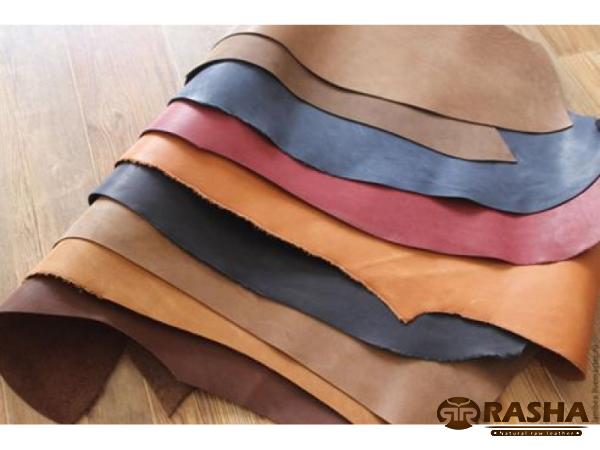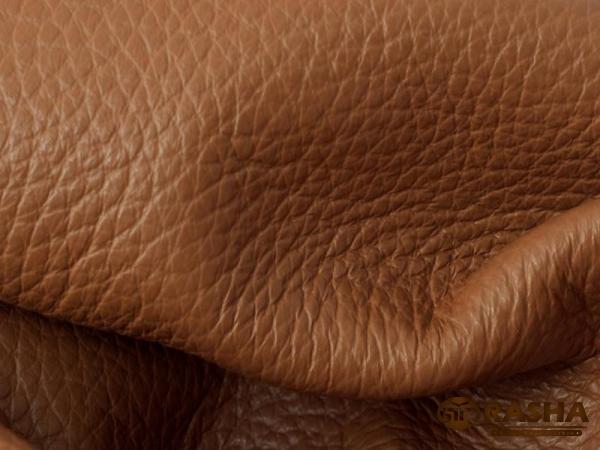Nubuck and suede are both popular materials used in the world of fashion and footwear. However, many people often confuse the two terms or are unsure about the differences between them. In this article, we will provide a comprehensive overview of nubuck and suede, outlining their characteristics, production process, maintenance, and typical uses. 1. What is Nubuck? Nubuck is a type of leather that has been sanded or buffed on the outer surface, resulting in a soft and velvety texture. It is typically made from top-grain leather, which is the uppermost layer of the hide. The sanding process gives nubuck a smooth and luxurious appearance, resembling suede. However, unlike suede, nubuck is created by sanding the outer side of the leather, providing a cleaner and more consistent surface. 2. What is Suede? Suede, on the other hand, is also produced from the underside of the animal hide, similar to nubuck. It is made by roughening up the inner side of the leather, which gives it a characteristic fuzzy and velvety texture. Suede has a softer feel compared to nubuck and is known for its flexibility and lightweight nature.

leather
 3. Characteristics and Appearance Nubuck and suede share similar qualities in terms of touch and appearance, with their soft and velvety texture. However, there are some differences to consider: – Durability: Nubuck is generally more durable than suede, as it undergoes a sanding process that makes it more resilient and resistant to wear and tear. – Surface Smoothness: Nubuck has a smoother surface compared to suede, as it is sanded on the top grain, resulting in a cleaner and more consistent appearance. – Color Retention: Nubuck tends to retain its color better than suede over time, as it is less prone to fading or discoloration. – Stain Resistance: Nubuck is typically more resistant to stains compared to suede, as its smooth surface makes it easier to clean. – Water Resistance: Neither nubuck nor suede are known for their water resistance, as both materials can become damaged when exposed to moisture. 4. Production Process Both nubuck and suede are derived from animal hides, but the processes by which they are made differ slightly: – Nubuck Production: The production of nubuck involves sanding or buffing the top grain of the leather to create a smooth and velvety texture. The sanding process removes any imperfections or blemishes, resulting in a more consistent surface.
3. Characteristics and Appearance Nubuck and suede share similar qualities in terms of touch and appearance, with their soft and velvety texture. However, there are some differences to consider: – Durability: Nubuck is generally more durable than suede, as it undergoes a sanding process that makes it more resilient and resistant to wear and tear. – Surface Smoothness: Nubuck has a smoother surface compared to suede, as it is sanded on the top grain, resulting in a cleaner and more consistent appearance. – Color Retention: Nubuck tends to retain its color better than suede over time, as it is less prone to fading or discoloration. – Stain Resistance: Nubuck is typically more resistant to stains compared to suede, as its smooth surface makes it easier to clean. – Water Resistance: Neither nubuck nor suede are known for their water resistance, as both materials can become damaged when exposed to moisture. 4. Production Process Both nubuck and suede are derived from animal hides, but the processes by which they are made differ slightly: – Nubuck Production: The production of nubuck involves sanding or buffing the top grain of the leather to create a smooth and velvety texture. The sanding process removes any imperfections or blemishes, resulting in a more consistent surface.
Specifications of leather
 – Suede Production: Suede is created by splitting the leather horizontally, separating the top grain and the suede layer beneath. The suede layer is then treated to create its distinctive fuzzy and velvety texture. 5. Maintenance and Care Proper maintenance and care are crucial to ensure the longevity and appearance of both nubuck and suede products: – Cleaning: Nubuck and suede should be regularly brushed with a soft-bristled brush to remove any surface dirt or debris. For heavier stains, specialized nubuck or suede cleaning products can be used. – Protection: Both materials can benefit from a protective spray or waterproofing treatment to guard against stains and moisture. It is important to follow the instructions provided by the manufacturer when applying any protective products. 6. Typical Uses Nubuck and suede are popular choices in the fashion and footwear industries, with a wide range of applications: – Footwear: Nubuck and suede are commonly used to make shoes, boots, and sneakers due to their softness, flexibility, and stylish appearance. – Upholstery: Both materials are used in the creation of furniture, particularly for items such as sofas, chairs, and cushions.
– Suede Production: Suede is created by splitting the leather horizontally, separating the top grain and the suede layer beneath. The suede layer is then treated to create its distinctive fuzzy and velvety texture. 5. Maintenance and Care Proper maintenance and care are crucial to ensure the longevity and appearance of both nubuck and suede products: – Cleaning: Nubuck and suede should be regularly brushed with a soft-bristled brush to remove any surface dirt or debris. For heavier stains, specialized nubuck or suede cleaning products can be used. – Protection: Both materials can benefit from a protective spray or waterproofing treatment to guard against stains and moisture. It is important to follow the instructions provided by the manufacturer when applying any protective products. 6. Typical Uses Nubuck and suede are popular choices in the fashion and footwear industries, with a wide range of applications: – Footwear: Nubuck and suede are commonly used to make shoes, boots, and sneakers due to their softness, flexibility, and stylish appearance. – Upholstery: Both materials are used in the creation of furniture, particularly for items such as sofas, chairs, and cushions.
buy leather
 – Bags and Accessories: Nubuck and suede are also utilized in the production of handbags, wallets, belts, and other fashion accessories. 7. Price Considerations Nubuck is generally more expensive than suede due to its durability and production process. The sanding and buffing stages involved in creating nubuck require more time and effort, resulting in a higher price point. Suede, on the other hand, is more affordable while still offering a similar aesthetic appeal. In conclusion, while nubuck and suede share similarities in terms of their soft feel and velvety texture, there are distinct differences between the two materials. Nubuck is sanded on the outer side of the leather, making it smoother and more durable, while suede is produced from the inner side, resulting in a fuzzier texture. Both materials have their own unique characteristics, and the choice between nubuck and suede ultimately depends on personal preference, the intended use, and desired level of durability.
– Bags and Accessories: Nubuck and suede are also utilized in the production of handbags, wallets, belts, and other fashion accessories. 7. Price Considerations Nubuck is generally more expensive than suede due to its durability and production process. The sanding and buffing stages involved in creating nubuck require more time and effort, resulting in a higher price point. Suede, on the other hand, is more affordable while still offering a similar aesthetic appeal. In conclusion, while nubuck and suede share similarities in terms of their soft feel and velvety texture, there are distinct differences between the two materials. Nubuck is sanded on the outer side of the leather, making it smoother and more durable, while suede is produced from the inner side, resulting in a fuzzier texture. Both materials have their own unique characteristics, and the choice between nubuck and suede ultimately depends on personal preference, the intended use, and desired level of durability.










Your comment submitted.